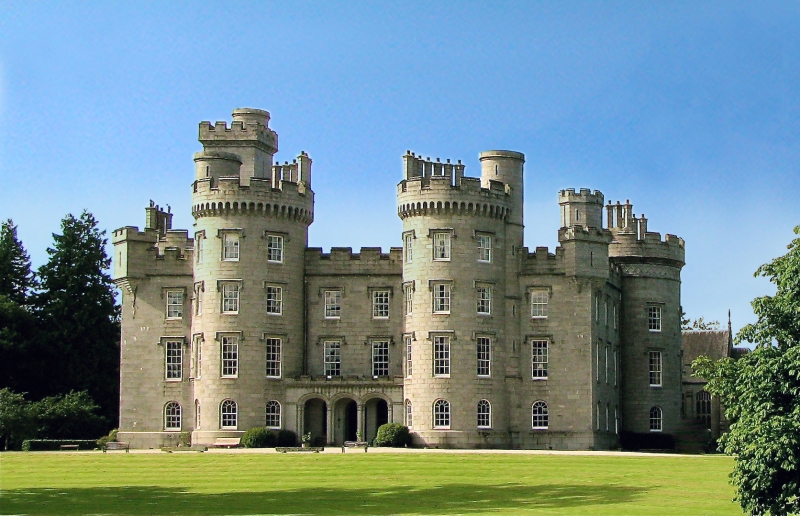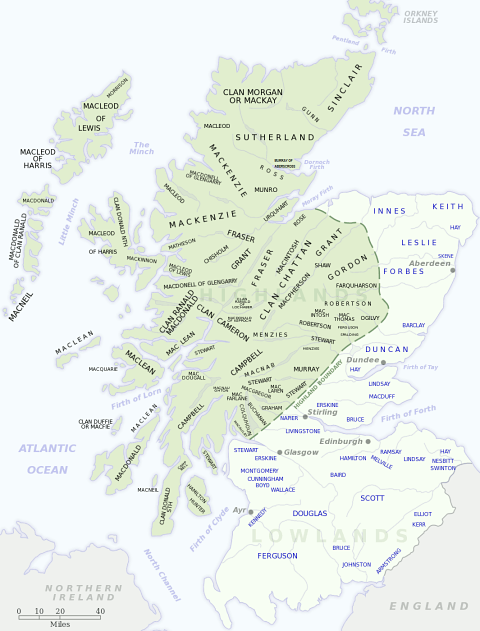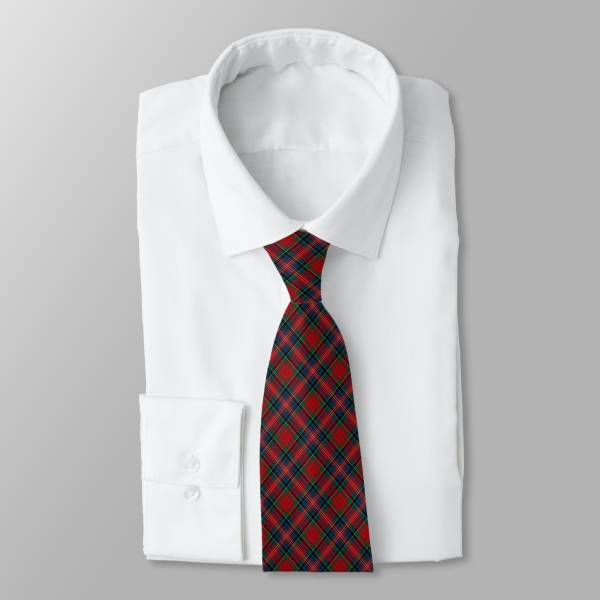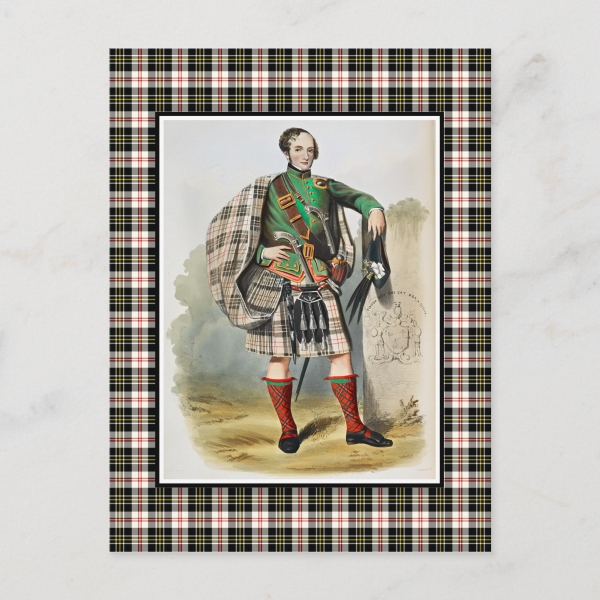
Motto: Touch not the cat but a glove
Historic Seat: Cluny Castle
District: Badenoch
Associated Surnames: Carson, Cattanach, Clark, Clarkson, Clerk, Cluny, Ferson, Gillespie, Gillies, Goudie, Gow, Lees, MacCunn, MacCurrach, MacFall, MacGoun, MacGowan, MacLeish, MacLerie, MacLise, MacMurdo, MacMurdoch, MacMurrich, MacVurich, Mardoch, Murdoch, Murdoson, Pearson, Smith
Associated Tartans:
Early MacPherson Genealogy and History:
(Excerpt from "The Scottish Clans and Their Tartans", James Grant, 1906)
The MacPhersons are called in Gaelic the "Clan Mhurich" (pronounced Vuirich), and have long been an independent tribe. In English their chief is called Cluny MacPherson. The other branch of the tribe are the MacPhersons of Invereshie (now MacPherson-Grants), and for ages distinguished as the Sliochd Ghillies, and which is composed of many considerable families, not only of the name of MacPherson, but such as the Gillieses, the Gillespies, etc. The founder of the Sliochd Ghillies branch lived in the reign of Alexander III. "He was a younger son of Ewan or Eugene Baan, the fair-complexioned, and brother of Kenneth MacPherson, the ancestor of Cluny MacPherson.
Ewan was son of Muriach or Murdoch, grandson of Gillichattan, chief of the Clan Chattan,1 during the reign of David I, who having devoted himself to the service of the church, became abbot of Kingussie, which title he enjoyed till 1153, when, upon the demise, issueless, of his elder brother Diarmid, the chieftainship devolved on him." Subsequently he procured from Rome a dispensation enabling him to marry, and he espoused a daughter of the Thane of Calder, and their son Ewen was called MacPherson, or the son of the Parson, surnames about that time becoming hereditary.
The Parson left two sons, Gillepatrick and Ewan Baan. Gillepatrick was the father of Donul Dall, the supreme chief of the Clan Chattan, whose only child and heiress, Eva, was married to Angus MacIntosh of that Ilk, head and chieftain of the Clan MacIntosh.
Coming to times of more distinct history in the Rotation of Clans, under the two Acts of Parliament in 1587 and 1594, we find "No. 28, the Clan Chattan, MacPhersons, and MacIntoshes" classed together.
In 1591 a bond of Manrent2 to George, Earl of Huntly, was signed at Huntly Castle, "leallie, faithfullie, and to serve in all action and wars agains quhatsumever," that noble and potent Lord, by Andrew MacPherson of Cluny, John MacPherson in Brakaucht, James and Paul MacPherson, and others. This was in pursuance of a system of private leagues, which attained a great height in Scotland between 1440 and 1570, and resulted from the impotence of all law and authority save that of the sword.
In 1704 the MacPhersons mustered 700 claymores, when a list of troops to be raised for King James was made up.
Cluny with his MacPhersons joined the Prince in 1746, and fought in the first line at Falkirk.3 It was he that, all unaware that the cavalry had iron skull-caps in their hats at Falkirk, expressed astonishment at the thick skulls of the English, "as he had struck them till he was tired, and was scarcely able to break one!"
At Cluny Castle there is still preserved a letter written to him by the unfortunate Prince, dated from a cave in Lochaber, 18th September 1746. It runs thus: –
"MacPherson of Cluny, – As we are sensible of your clan's fidelity and integrity to us during our adventures in Scotland and England in the years 1745 and 1746 in recovering our just rights from the Elector of Hanover, by which you have sustained very great losses both in your interest and person, I therefore promise, when it shall please God to put it in my power, to make a grateful return, suitable to your sufferings.
(Signed) Charles, P.R."
There too are preserved the Prince's weapons, and the famous Feadan Dubh Chlann Chatain, or Black Chanter of Clan Chattan, which according to tradition, inspired with a strange courage all who heard it.
The late Cluny MacPherson, C.B.,4 after the celebration of his golden wedding, when a massive candelabrum of 700 ounces of silver, representing an incident in the '56, was presented to him and Lady Cluny "by their friends and clansmen," died in 1885, at the age of eighty-one; but leaving two gallant sons, Ewen MacPherson, who was Colonel of the 93rd Highlanders, and served in the campaigns under Lord Clyde; and Duncan, who served with him in the same wars, and latterly led the Black Watch triumphantly over the trenches of Tel-el-Kebir.
A singular member of this clan was Malcolm MacPherson of Phoiness, who, in his eightieth year, after being ruined by a lawsuit, joined the Fraser Highlanders at the battle of Quebec, and used his claymore with such fury that he won the attention of General Townshend, who obtained for him an ensign's commission, with full pay for the short remainder of his life (Stewart's Sketches.)
(End excerpt)
Next page: Clan MacQueen
Footnotes:
1 Clan Chattan: Clan Chattan is a unique Highland clan confederation whose past and present members include Clan Davidson, Farquharson, MacBean, MacGillivray, MacIntyre, Mackintosh, MacLean, MacPhail, MacPherson, MacQueen, MacThomas, and Shaw. Read more about Clan Chattan at Wikipedia.
2 Manrent: A Scottish contract of the mid-15th century to the early 17th century, usually military in nature and involving Scottish clans. The bond of manrent was commonly an instrument in which a weaker man or clan pledged to serve, in return for protection, a stronger lord or clan. Essentially, it was a promise by one person to serve another, such that he shall be friend to all his friends, and foe to all his foes. Read more about Manrents at Wikipedia.
3 The Battle of Falkirk Muir (1746): The Battle of Falkirk Muir was fought on 17 January 1746 between the Jacobites under Prince Charles Edward Stuart (Bonnie Prince Charlie) and a government army commanded by Lieutenant General Henry Hawley. Read more about the Battle of Falkirk Muir at Wikipedia.
4 C.B.: Companion, The Most Honourable Order of the Bath. Read more about the Order of the Bath at Wikipedia.

Distribution of Scottish clans and families
View larger map at Wikimedia Commons

Browse the Clan MacPherson Tartan Collection with home decor, personal accessories, crafting, paper products, and more.

Browse the Clan MacPherson Dress Tartan Collection with clothing, home decor, accessories, electronics cases, and more.

Clan MacPherson Postcard: Digitally cleaned and enhanced vintage illustration with tartan frame.